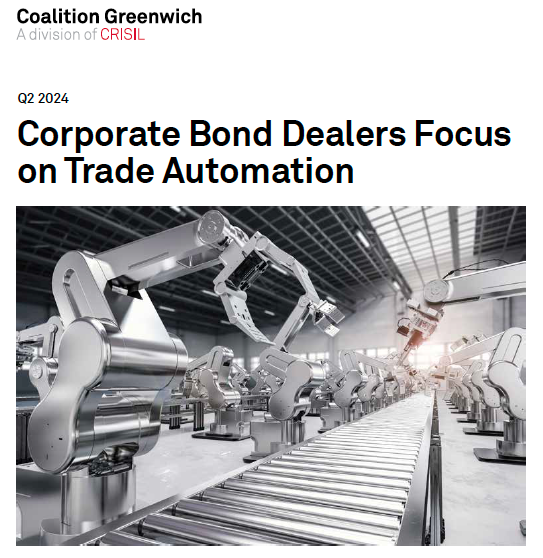The European bond market – changing by the microsecond
As featured in The Desk magazine.
Advantages have always been sought by traders, often resulting in a race to obtain information before competitors. Incorporating new technology has always been a part of this.
The invention of telescopes in the 17th century quickly led to their adoption in trade; spotting merchant ships approaching and making forecasts on what goods were coming into port. This advance notice allowed merchants to make pre-emptive moves in the market, such as adjusting prices, buying up stock, or negotiating contracts in advance. Initially, only those with the technical skill to build their own telescopes were able to take advantage, but as telescopes were commoditised, they became standard practice for merchants waiting for the arrival of goods.
Managing DMO obligations to maintain a liquid market
The European bond market is made up of established banks who act as wholesalers (Primary Dealers), buying bonds from governments’ Debt Management Offices (DMO). DMOs place strict requirements on Primary Dealers to maintain the right to purchase directly from them. These requirements vary from minimum purchase volumes and servicing the secondary market, to providing liquidity to other banks through market making. Providing secondary market liquidity can be challenging economically, nonetheless it is a key responsibility of being a Primary Dealer.
As a result of market making obligations, the requirement to provide liquidity by continually placing quotes in the market to buy and sell bonds, means that market makers are exposed to other traders executing on their orders when resting on the orderbook. To manage this risk, trading venues attempt to create an environment for banks to meet their market making obligations with DMOs while still maintaining a liquid market. This is partially achieved by restricting access to who can be a member of the market. In the case of Euronext MTS, this is done by creating two markets on the same physical trading system. One market is restricted to Primary Dealer banks, the other is also open to non-primary dealers including HFTs and regional banks.
The open market that includes HFTs creates a more competitive environment, leading to faster prices and tighter spreads. Having both markets co-located in the same data centre makes it easier for any firm with access to both markets to use signals from the faster, more competitive market to trade on the Primary Dealer-only market. While Primary Dealers have an advantage in seeing the money flow from the secondary market, they can be slower to react to changes than HFTs in response to other events where they have no advantage, such as economic data releases or geopolitical events.
The MIFIR review on the transparency regime for bonds, requiring more trades to be made public, will level the playing field for market participants in government bonds early next year. This will add further competition and pressure on Primary Dealers.
A focus on speed
The move by MTS to co-locate with the Euronext trading venue in Bergamo has divided dealers into those with low-latency access and those without.
The constant improvement and commoditisation of low-latency trading technology, similar to how telescopes became commoditised in the 17th century, continues to put pressure on Primary Dealers’ market-making activities. This has put pressure on their market-making operations, forcing banks to move from trading hundreds of miles away to co-locating in the Euronext MTS data centre, as well as to improve their trading software to react faster. This is not new to the Fixed Income market. For more than 20 years the US treasury market was led by HFTs and banks with the technology to compete. Co-locating with the Chicago Board of Trade (CME CBOT) and Brokertec in New Jersey and the race to build low latency connectivity between them, popularised in the book Flash Boys, is now following a similar path between the Eurex futures market in Frankfurt and Euronext MTS in Bergamo.
Previously, the speed of processing orders in the market was insignificant compared to the time it took for data to travel long distances to the trading market. The time it takes for light to travel from London to Bergamo is four-thousandths of a second; in that same time, a market maker can execute more than 20 orders. Some of the most liquid venues update their market data about 5,000 times a second in volatile markets, which provides an advantage for those with low latency access. Firms co-locating are now looking further at how technology can be used to improve processing speed to minimise latency.
Low latency technology has become a necessity
Low latency used to be an advantage employed by the few; now it is a standard employed by the many. Players not using this technology are being pushed out of the game.
Thankfully for those banks sitting behind the latency curve there are technology partners who can help them remain competitive. TransFICC offers colocation hosting in Equinix data centres around the world, low latency connectivity and high performance order and market data handlers for Fixed Income markets.
Share














